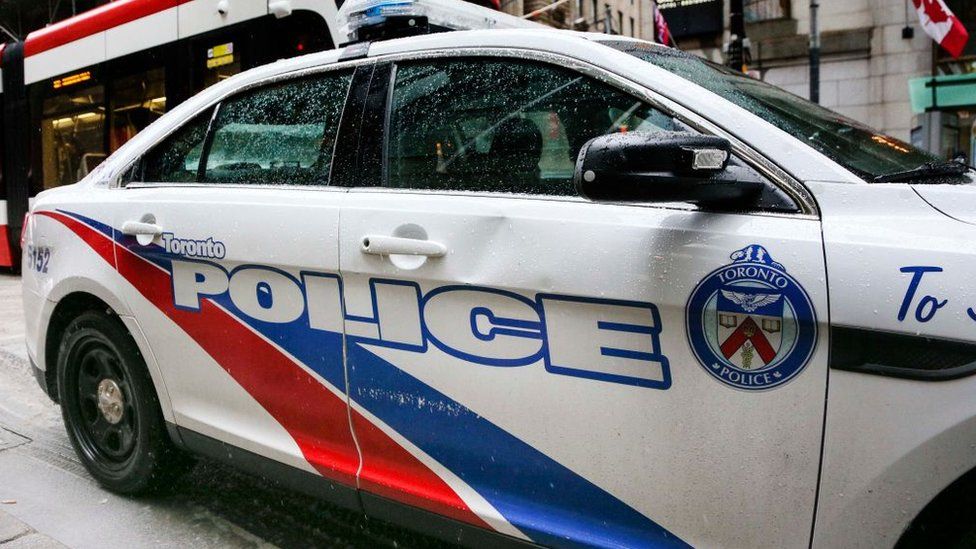
Ukraine’s president Volodymyr Zelenskyy struck a defiant tone at the White House on Wednesday, questioning whether Kyiv could ever reach a “just peace” with Moscow and pressing Joe Biden to send additional weapons to sustain his war effort through the winter.
The US president used a joint appearance with Zelenskyy, whose Washington trip was his first abroad since the Russian invasion, to tout $1.85bn in new assistance including a long-sought Patriot missile defence battery. He assured his Ukrainian counterpart that Washington was prepared to stand by Kyiv “as long as it takes”.
Zelenskyy was effusive in his thanks to the US president and the American people, and during a meeting in the Oval Office made a highly-symbolic presentation to Biden of a military medal from a frontline soldier commanding a unit armed by US-supplied mobile artillery system.
But after nearly four hours of meetings at the White House, there were some signs of tension between the two presidents even amid the warm affirmations of unity.
Zelenskyy’s questioning of whether he could ever reach a “just peace” with Russia’s president Vladimir Putin came after Biden and US officials publicly argued Ukraine’s leader was seeking just that.
“For me as a president, ‘just peace’ is no compromises,” he said, standing next to Biden during a news conference in the White House’s East Room.
“There can’t be any ‘just peace’ in the war that was imposed on us,” he added, saying Kyiv would not agree to anything short of a return to full territorial integrity and “payback for all the damages inflicted by Russian aggression”.
In addition, Biden sought to temper Zelenskyy’s demands for even more armaments, arguing that an effort to provide weapon systems that are “fundamentally different” could risk rupturing the alliance of Western countries the US is pressing to maintain.
Still, the White House appearance of the two wartime allies in Washington — Zelenskyy clad in his customary military green cargo pants and sweatshirt, Biden wearing a striped tie of Ukraine’s national colours of blue and yellow — was a dramatic showing of unity for two leaders who have staked their countries’ future on bloodying a common Russian foe.
Zelenskyy arrived in Washington shortly after the Biden administration announced $1.85bn in new lethal assistance for Kyiv, including the advanced Patriot system.
His visit on the more than 300th day of the war comes at a critical moment in the Russian invasion. Officials in Kyiv have warned Moscow is gearing up for a possible winter offensive as Ukraine fends off Russian attacks on two fronts: on the ground, where grinding combat between the militaries is under way, and in the skies, where Moscow has pummeled Ukraine’s critical energy infrastructure.
Western weaponry will be critical for Ukraine’s ability to maintain its defences. Kyiv has long sought the Patriot system, which analysts say will be a powerful addition to the country’s air defences, although it will not offer immediate respite from the mass Russian missile and drone attacks that are smashing Ukraine’s power infrastructure.
A senior US defence official said the Patriots will complement other weaponry already provided by the US and its Nato allies.
“For air defence, there is no silver bullet,” the official said. “Patriot will complement a range of medium and short-range air defence capabilities that we’ve provided and the allies have provided in prior donation packages.”
Ukrainian forces will need several months of training before they will be able to employ the system successfully, the official said.
The Biden administration sought to use the visit to showcase US support for Ukraine as the country heads into a tough winter. Biden and his wife Jill kicked off the White House meeting by greeting Zelenskyy outside the south portico not long after Ukraine’s leader touched down outside Washington on a US air force plane, which flew to Joint Base Andrews in Maryland from Poland.
Later in the day, Zelenskyy is due to address a joint session of Congress before returning to Kyiv.
In addition to the Patriot system, the US also announced it will for the first time transfer joint direct attack munitions, which convert unguided aerial munitions into “smart bombs”, allowing Ukrainian forces to more precisely target Russian military positions.
The US will train Ukrainian troops on the Patriot system, likely in Germany, for weeks before it arrives in Ukraine. It is expected to take some time before the system is operational on the battlefield.
Congress is also set to vote this week on a spending bill that includes $45bn in additional funds for Kyiv. The US has already committed tens of billions of dollars in military, economic and humanitarian assistance to Ukraine since Russia invaded in February.
However, Republican leaders in the House of Representatives have suggested that passing additional aid for Kyiv will be more challenging next year when they take control of the lower chamber of Congress.
The Kremlin on Wednesday said it did not expect any positive developments or changes in Kyiv’s position on peace talks following Zelenskyy’s visit to Washington.
“The weapons supply to Ukraine continues, and their range is expanding. It leads to the conflict aggravation and does not bode Ukraine any good,” Kremlin spokesperson Dmitry Peskov said.
Additional reporting by Aime Williams in Washington, Anastasia Stognei in Riga and Christopher Miller in Kyiv
https://news.google.com/__i/rss/rd/articles/CBMiP2h0dHBzOi8vd3d3LmZ0LmNvbS9jb250ZW50LzY0OWEyZmU1LWFlZGYtNDRjOS05ZTVkLTZhNTczYTZlYTNlNtIBAA?oc=5
2022-12-21 23:29:17Z
1708583562









